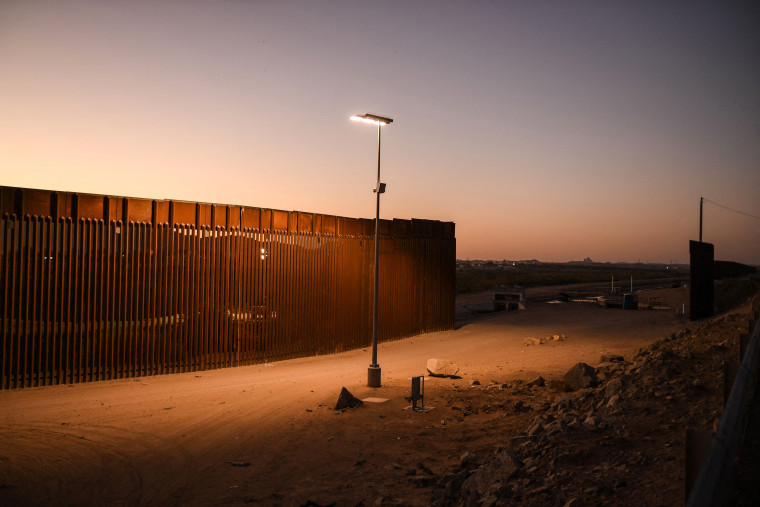Barriers constructed along the U.S.-Mexico border during the Trump administration caused "significant damage and destruction" to the environment and cultural sites, the Government Accountability Office said in a report Thursday.
The watchdog's 72-page document says former President Donald Trump's efforts to deliver on a campaign promise — to construct more than 450 miles of border barrier panels along the southwest border to deter illegal crossings and activity — hampered the migration of endangered species, eroded federal lands, disrupted water flow and "irreparably" damaged sacred tribal sites.
As they prepared to construct the wall in Arizona, California, New Mexico and Texas, Trump administration officials waived laws to protect cultural and natural resources and installed more than half of the wall's mileage on federal lands.
Barrier panels extended, for example, through Arizona's Organ Pipe Cactus National Monument, San Bernardino National Wildlife Refuge and Coronado National Forest and parts of a national wildlife refuge in the Lower Rio Grande Valley of Texas.
According to the report, 81% of the panels' mileage replaced existing barriers.
In some instances, narrower pedestrian barriers replaced vehicle barriers with wider openings, obstructing the passage of wildlife, including endangered species, the report said.
The construction has also damaged native vegetation and disrupted natural water flows, which in turn has "threatened and endangered" fish species and affected drainage during heavy rain, it said.
The GAO noted that in addition to its environmental impacts, installation of parts of the wall has also harmed historic sites and sites some tribes consider sacred.
A sacred site was "irreparably damaged" in Arizona when contractors used explosives to clear a path to expand an existing patrol road, the report said, citing Tohono O’odham Nation officials.
Many saguaro cacti in Arizona, which are sacred to the tribe and found only in the Sonoran Desert, were also destroyed as contractors sought to transplant them away from construction areas, the report said.
Rep. Raúl Grijalva, D-Ariz., who requested the report, called the wall a "symbolic message of hate" and a "political stunt" in a statement Thursday.
"We now know for certain it has caused immeasurable, irreparable harm to our environment & cultural heritage," Grijalva wrote on the social media platform X, formerly known as Twitter.
A spokesperson for Trump did not immediately respond to a request for comment Thursday.
Construction of the barrier has stalled since January 2021, after President Joe Biden took office and signed a proclamation pausing the effort.
At the time, Biden said the wall was a waste of money and "not a serious policy solution."
Biden's move to halt the construction when he entered office “exacerbated” the project's negative impacts, the report found. The GAO said that Customs and Border Protection has made efforts to address safety hazards and remove exposed rebar at abandoned sites but that more needs to be done.
The agency agreed to the watchdog's recommendation to work with the Interior Department to develop a strategy to mitigate impacts on resources stemming from the barriers, according to documented letters from each agency included in the report. Both agencies declined requests for further comment.
